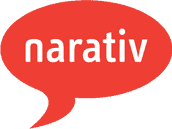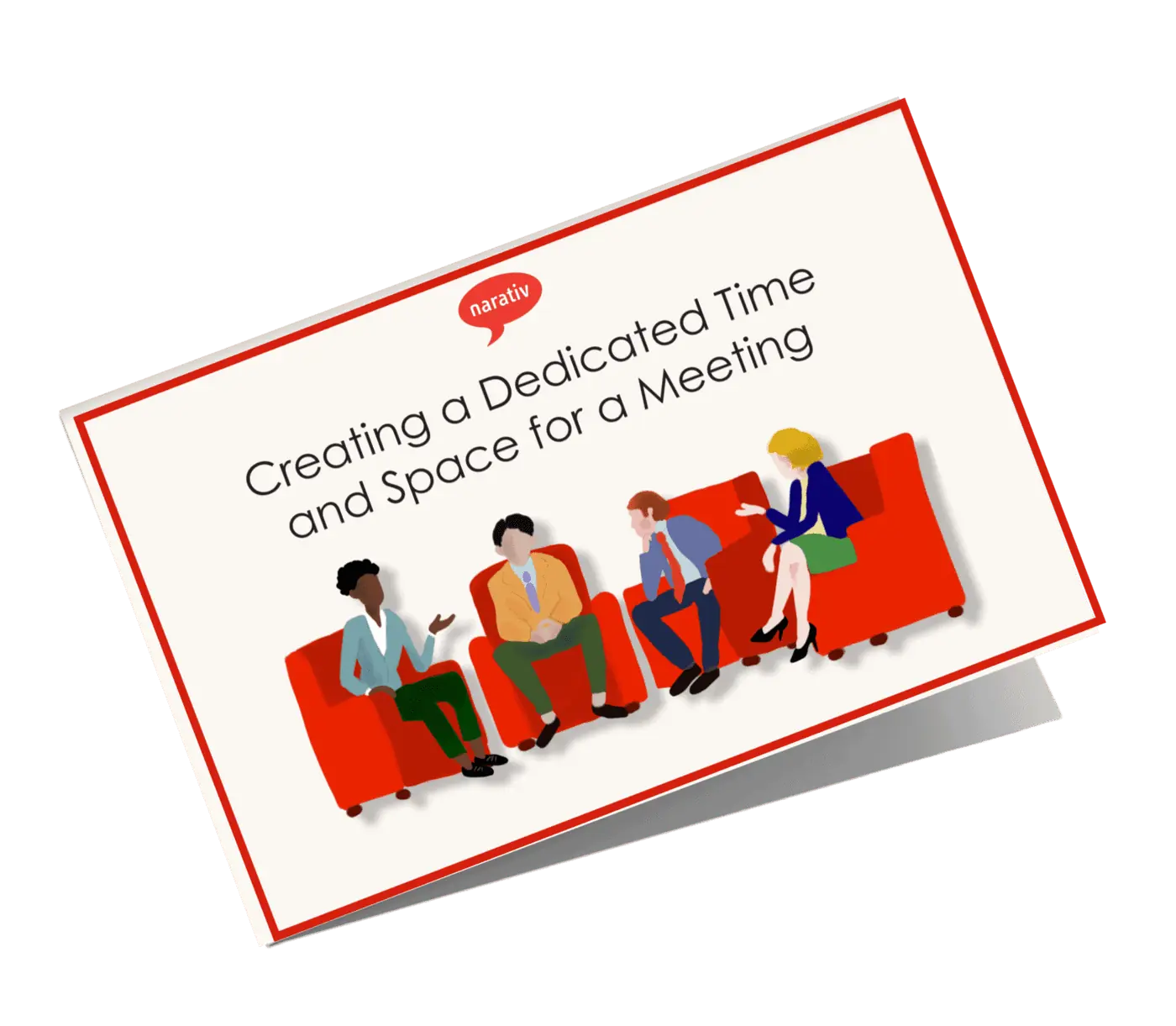In a recent interview for the Stories of Selling Human podcast with Alex Smith, Narativ CEO Jerome Deroy had the opportunity to go in-depth about the power of personal stories in connecting with customers and in helping salespeople find personal satisfaction in their work.

One of the overall aims of Alex’s podcast is to help mend the perception that salesmanship is separate from humanity. Jerome also believes that selling is inherent to humanity, and that the two are inseparable. In fact, one of the aims of Narativ’s coaching strategy is to help business clients internalize this idea and learn how to use their own personal experiences to help them form deeper connections with their company and the people their company serves—making this podcast mashup a match made in heaven.
Jerome said, “If you’re able to tell your own story—not the story of somebody else, not the story of the CEO, not the story of the best salesperson you know, but your story—and really tap into those experiences, then you will better be able to relate to other people. It’ll make you a better listener of other people’s stories, and you’ll be able to recognize the things that really engage people.”
In this episode, Jerome and Alex tackled this topic head-on, discussing the obstacles that tend to trip people up in telling their story and how to use the “what happened” method to tell a story that fosters real connection.
Storytelling Starts with Listening
Something that trips most people up in their initial approach to telling their own story is that they get bogged down in the elements of presentation. There are a lot of “rules” for business communication about how a person should act, the sorts of words they should use, how they should carry themselves, and on and on. Jerome refers to these preconceptions about presentation as obstacles to listening:
“To us, it all starts with listening,” he explained. “Even when you don’t have a listener, you are listening to yourself.”
He further stated that it’s important to clear the slate of those obstacles to listening so that the most authentic story of who we are can emerge. Jerome even shared a few ways to unlock your listening skills:
Understand Why You Care
To start getting ahead of your own obstacles, it’s important to ask yourself “what makes me care about my audience?” Identify some experiences and concerns the person you’re speaking to might have based on what you know about them, and consider which of your own life experiences has made you most capable of understanding those concerns. Have the story of that experience ready when you meet the person, and then, even before you share it, listen to them for a while first and see if what they have to say brings up a different experience.
“Start with listening,” said Jerome. “Let them speak. Shut up for a while and see what emerges in your own mind.” If the conversation is engaging, you may not need a story, but it’s good to have one on hand if a connection needs to be made.
The “What Happened” Method
Jerome also shared something he emphasizes when teaching clients: tell a personal story that answers the question “what happened?” It’s natural when telling a story to want to insert details about how we felt or what our opinions were, but, paradoxically, a story will usually feel more engaging and personal if the teller simply gives events as they happened.
“The best art and the best stories are the ones that let the audience in,” said Jerome. “Our brains are hard-wired for stories.” There’s no need to worry about trying to get in the heads of your listeners so that you can tell the story the “right way.” The way to know what your listener is thinking is by telling them what happened, listening to their response, and leaning into the connection.
Read for yourself and see how emotionally connected you feel to either of these statements:
- “I was so disappointed by this salesperson’s attitude that I just couldn’t buy from him.”
- Contrast that with this “what happened” statement: “The salesperson raised an eyebrow and said “You’d be crazy to pass up this deal lady.” I responded: “Have a good day, I think we’re done here.” And I left.”
In the latter statement, the audience now knows information that comes with emotional value, and it makes the teller much more credible because of its specificity, but more importantly because we can see and hear the people in the story.
Connect Through Heritage
And finally, Jerome shared an exercise he uses to connect with his clients and ease them into telling personal stories in a natural way. He asks them to tell a story about one of their grandparents as if they were that grandparent.
“Even people who never knew their grandparents still have a story about them,” he explained, adding that inviting people to talk about their heritage sets them at ease, creates instant avenues for connection, and reveals things about a person to you and to themselves.
As clients learn to use these methods to connect with their personal stories, it paves the way for more genuine interpersonal connection, which, in turn, makes for more authentic business interactions—even when it comes to something as tricky as sales.
Authentic Stories for Authentic Business
To illustrate how connected storytelling helps people in a sales setting, Jerome talked about a client he worked with that helped insurance companies provide instant loans for people in emergencies.
A particular saleswoman was struggling with selling the features of the service while also making a personal connection, so Jerome asked her if she had any experiences that would connect her to a person seeking a small personal loan. She told him a story about a time when, as a young mother, a delayed paycheck had canceled all of her weekend plans and left her having to choose between buying diapers or buying food. The panic and frustration of that experience gave her a way to connect with her customers—and from that experience she was able to create a natural connection rather than trying to get sales points across in an inorganic way.
Developing the ability to connect in this way will not only improve sales ability but communication in general. “It’ll make you more authentic, it’ll make your relationships more authentic, and you’ll find things out about people that perhaps you wouldn’t have known,” Jerome promised his listeners.
To close out the interview, Alex asked Jerome to share something that his family might say is “uniquely Jerome.” He shared the story of an encounter he had when he first moved to New York with an angry woman who was stalking his landlord. His response of calmly listening and rolling with the punches in a crazy situation to see how it unfolded before reacting is apparently very indicative of Jerome as a person.
If you would like to learn how to craft a story of your own, Narativ’s book, “Powered by Storytelling” is available on the Narative website, and the Narrativ podcast, Story Talks, is also a great resource if you’d like to learn more.
If you want to connect with Jerome directly to get Narativ training for your company (or to hear the rest of that stalker story,) reach out to him on our Contact page today.



